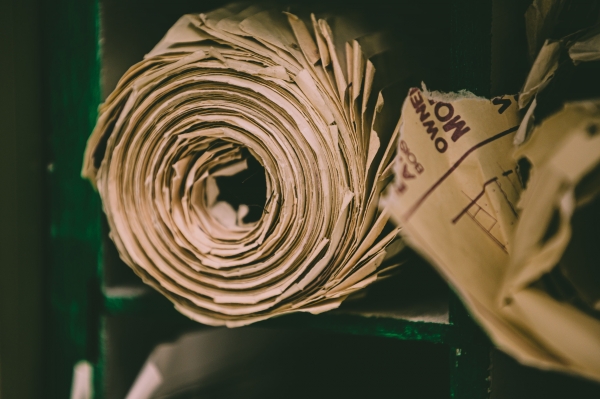Comparing different packaging materials
Posted: 29 August 2022

Comparing different packaging materials
With climate change consequences becoming more and more visible recently, our society learns how to use packaging more wisely. As the demand for resources is steadily increasing, we must focus on sustainability and circularity and utilize existing resources. But with so many materials to choose from, we know that it can be tricky to make the right choice. Therefore, we have summarized the characteristics of the most common material types for different packaging so you can form a better understanding of which is the best fit for your purposes.
Paper and cardboard
Paper and cardboard are used for a variety of products. From bags and pouches to stickers, boxes, labels, wrapping paper and greeting cards. Made from wood pulp (though other materials such as agricultural bio-waste, hemp and even stone can be used), paper and cardboard have a moderate-high chance of being recycled and reused an average of 5x before losing quality. A benefit of paper is that if it does happen to end up in nature, paper and cardboard can degrade under normal conditions between 2 months and 5 years, depending on the external conditions and physical properties of the material i.e. size, thickness and layers.
As the material has an established recycling stream, high recycling rates and is produced from renewable resources, it is seen as a darling of the sustainability industry. If renewable energy sources are used during production, paper and cardboard can outperform plastics’ lifecycle eco impacts. However, the use of renewable energy is important because without it there are high energy costs and high water and chemical use in production. Additionally, sourcing wood pulp can contribute to deforestation and decrease biodiversity if it is not done sustainably.
Fossil-based plastic
Plastics can be used for an array of applications in the packaging industry. Examples are food preservations, liquid containment, protection of goods and many other purposes. But as fossil-based plastic does not come from renewable resources and is therefore not compostable, the costs of using plastic packaging need to be evaluated. Fossil-based plastic takes many years to decompose (450 years on average for a water bottle) and in doing so, pollutes the environment with microplastics as it breaks down. It is responsible for harming marine life as it often ends up polluting waterways and accumulating in the food chain. Current global recycling rates remain low, with an estimated 9% of plastic being recycled. Even though it is recyclable, it loses material quality in every recycling loop. Plastic will continue to play an integral part in society because it cannot be substituted in every application (medical or food use for instance), it is essential that we transition to more sustainable and environmentally friendly alternatives where possible.
Bio-based plastic
More and more innovative bio-based plastic products are established. They are usually sourced from organic materials like corn and sugarcane and are mostly used for bags and pouches. Depending on how well the materials are developed some of them can quite well imitate many of the characteristics of conventional plastic. However, unless made from bio-waste, bio-based plastics compete with food crops and require high levels of fertilizer and water to be produced. Currently, the materials are not recycled but composted, as the relevant infrastructure is currently not in place.
Glass
Glass has been used to store liquids and other materials since the time of the ancient Egyptians. Its ability to protect food and beverages has been highly valued throughout history, as well as its durable quality. If left untouched in the environment, glass will never degrade, but unlike plastic, it will not harm the ecosystem either. Glass is produced by heating sand, soda ash and limestone to a high temperature and shaping it accordingly. These resources are finite, however, glass can also be recycled an infinite number of times, and has very high recycling rates throughout European countries currently.
Metal
Metal-based packaging materials provide excellent protection to goods, whether food, liquid or other, due to the material's characteristics. They can be shaped for a variety of needs and purposes, and like plastic and glass, they are durable and of long-lasting quality. Metals, such as aluminium and tin, can take an average of 250 years to degrade in the environment and if disposed of in nature, will not cause damage to the ecosystem. Though metal reserves are finite, they are incredibly vast in material. With the ability to be recycled an infinite number of times and current recycling rates being high around the world, metal is a reliable packaging material.